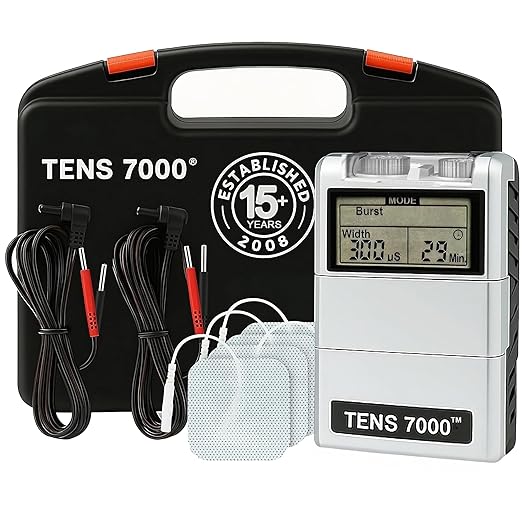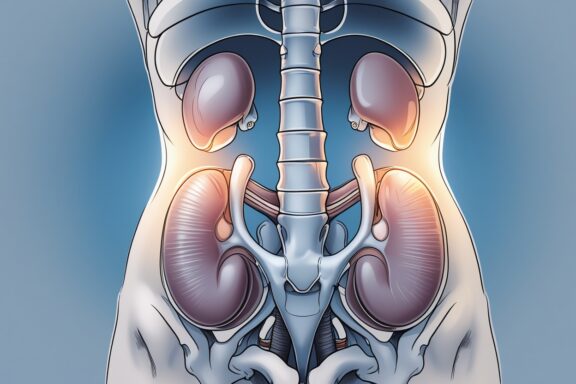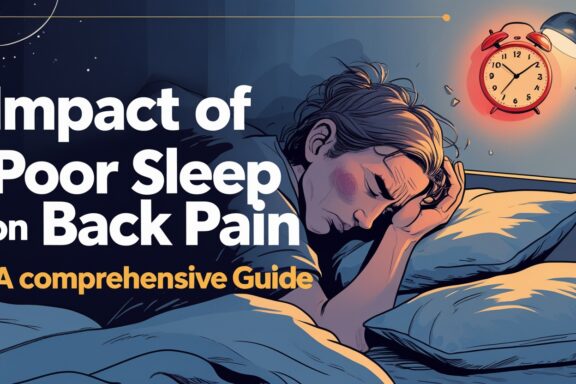Ugh, that nagging lower back pain again! You're not alone in this struggle—approximately 80% of adults experience lower back pain at some point in their lives. Whether it's from sitting hunched over your computer all day, lifting something the wrong way, or just the inevitable wear and tear of daily life, back pain can seriously cramp your style. But here's the good news: you don't need expensive treatments or countless trips to the doctor to find relief.
This comprehensive guide will walk you through effective lower back pain relief exercises you can do at home, transforming your living room into your personal physical therapy clinic. We'll explore gentle stretches, strengthening exercises, and practical tips that'll have you moving more freely in no time. Ready to kick that pain to the curb?
Understanding Your Lower Back Pain: The Root of the Problem
Before diving headfirst into exercises, let's get real about what's happening in your back. Your lower back, or lumbar spine, consists of five vertebrae stacked like building blocks, cushioned by discs and supported by a complex network of muscles, ligaments, and tendons. When any part of this intricate system gets out of whack—boom!—you're dealing with pain.
Common culprits include muscle strains, herniated discs, poor posture, and good old-fashioned muscle weakness. Interestingly, about 85% of lower back pain cases are considered “non-specific,” meaning there's no clear structural cause. The silver lining? This type of pain typically responds incredibly well to the right exercises and movement patterns. According to research published in the Journal of Physical Therapy Science, targeted home exercises can reduce lower back pain by up to 40% within just four weeks.

Essential Gentle Stretches for Immediate Relief
The Cat-Cow Stretch: Your Go-To Pain Reliever
This classic move is absolutely fantastic for mobilizing your spine and releasing tension. Start on your hands and knees—think tabletop position. Slowly arch your back while lifting your head and tailbone toward the ceiling (cow pose), then reverse it by rounding your spine and tucking your chin to your chest (cat pose). Flow between these positions for 10-15 repetitions.
The beauty of this exercise lies in its simplicity and effectiveness. It gently massages the spinal discs, improves flexibility, and activates the deep core muscles that support your lower back. Plus, it feels amazing! Many people notice immediate relief after just a few rounds of this movement.
Knee-to-Chest Stretches: Simple Yet Powerful
Lie flat on your back with knees bent and feet flat on the floor. Slowly bring one knee toward your chest, grasping it with both hands behind your thigh. Hold for 20-30 seconds, feeling that gentle stretch through your lower back and hip. Switch sides and repeat 2-3 times per leg.
This stretch targets the hip flexors and lower back muscles simultaneously, providing dual benefits. It's particularly effective for those who spend long hours sitting, as it counteracts the hip tightness that often contributes to lower back pain. Don't rush it—let gravity do most of the work!
Strengthening Exercises: Building Your Foundation
The Bird Dog: Core Stability Champion
Here's where things get interesting! Start in that same tabletop position, but this time you're going to challenge your stability. Extend your right arm forward while simultaneously extending your left leg backward. Hold for 5-10 seconds, then switch sides. Aim for 10-15 repetitions per side.
This exercise is a real game-changer because it targets multiple muscle groups at once—your glutes, core, and back extensors all work together to maintain balance. Research from the International Journal of Sports Physical Therapy shows that the bird dog exercise significantly improves core stability and reduces lower back pain recurrence. The key? Keep your hips level and avoid rotating your torso.
Pelvic Tilts: The Underrated Hero
Don't underestimate this seemingly simple move! Lying on your back with knees bent, gently flatten your lower back against the floor by tilting your pelvis upward. Hold for 5 seconds, then relax. Repeat 10-15 times.
Pelvic tilts might look easy, but they're incredibly effective at strengthening your deep abdominal muscles and improving spinal alignment. They also help you develop body awareness—teaching you how to find and maintain a neutral spine position throughout daily activities. It's like giving your back a gentle, therapeutic massage from the inside out!
Advanced Movements for Long-Term Success
The Dead Bug: Coordination Meets Strength
Alright, this one's a bit trickier, but stick with me! Lie on your back with arms extended toward the ceiling and knees bent at 90 degrees. Slowly lower your right arm overhead while extending your left leg until it hovers just above the floor. Return to starting position and switch sides. Perform 8-12 repetitions per side.
The dead bug exercise is phenomenal for teaching your core muscles to work independently while maintaining spinal stability. It mimics the coordination patterns needed for walking and other daily activities. According to physical therapy research, this exercise significantly reduces lower back pain by improving neuromuscular control. Pro tip: breathe normally throughout the movement—holding your breath defeats the purpose!

Modified Planks: Building Endurance
Traditional planks can be brutal on an already sore back, so let's modify them! Start with wall planks—stand arm's length from a wall and lean against it at a 45-degree angle. Progress to incline planks using a couch or coffee table, then eventually work toward knee planks on the floor.
Building core endurance is crucial for preventing future episodes of lower back pain. These modified versions allow you to strengthen your entire core system without aggravating existing pain. Start with 15-20 second holds and gradually increase as you get stronger. Remember, form trumps duration every single time!
Creating Your Daily Routine: Consistency is Key
Morning Mobility Sequence
Start your day right with a gentle 5-10 minute routine. Begin with cat-cow stretches to wake up your spine, followed by knee-to-chest stretches to release overnight stiffness. This morning ritual sets the tone for better movement patterns throughout your day.
Consistency beats intensity when it comes to managing lower back pain. Even on busy days, this brief morning sequence can make a significant difference in how your back feels. Think of it as preventive maintenance for your spine—much like brushing your teeth, it becomes second nature with practice.
Evening Wind-Down Routine
Your evening routine should focus on releasing the day's accumulated tension. Child's pose, gentle spinal twists, and legs-up-the-wall pose are excellent choices for promoting relaxation and recovery. Spend 10-15 minutes helping your body transition from the day's activities to restful sleep.
This isn't just about pain relief—it's about setting yourself up for better sleep quality, which is crucial for tissue healing and overall recovery. Poor sleep can actually increase pain sensitivity, so this evening routine serves double duty!
When to Seek Professional Help
Red Flag Symptoms
While these lower back pain relief exercises you can do at home are generally safe and effective, certain symptoms warrant immediate medical attention. These include severe pain following an injury, pain radiating down your leg below the knee, numbness or weakness in your legs, or loss of bladder/bowel control.
Don't ignore these warning signs! Sometimes what seems like simple muscle strain might actually be something more serious requiring professional evaluation. When in doubt, it's always better to err on the side of caution and consult with a healthcare provider.
Building Your Healthcare Team
Consider working with a physical therapist, even if just for an initial assessment. They can identify specific movement dysfunctions and provide personalized exercise recommendations. Many insurance plans cover physical therapy, and the investment in proper technique can save you from future pain episodes.
A good physical therapist will teach you how to progress exercises safely and recognize when you're ready for more challenging movements. They're also invaluable for addressing underlying issues like muscle imbalances or poor movement patterns that contribute to recurring pain.
Frequently Asked Questions
How often should I do these lower back pain relief exercises? For best results, aim for daily gentle stretching and 2-3 times per week for strengthening exercises. Listen to your body—if you're sore, take a rest day or stick to gentle movements.
How long before I see improvement? Many people notice some relief within a few days of consistent practice. Significant improvements typically occur within 2-4 weeks of regular exercise. Remember, healing isn't always linear—some days will be better than others.
Can I do these exercises if I have a herniated disc? While many of these exercises are generally safe, it's crucial to consult with a healthcare provider before starting any exercise program if you have a diagnosed disc issue. They may recommend modifications or alternative approaches.
What if the exercises make my pain worse? Stop immediately if any exercise increases your pain. Some mild discomfort during stretching is normal, but sharp or increasing pain is not. When in doubt, consult a healthcare professional.
Should I use heat or ice after exercising? Ice is typically best for acute injuries or inflammation, while heat can help with muscle stiffness and chronic pain. Many people find alternating between the two most effective. Listen to your body and use what feels best.
Final Thoughts: Your Journey to Pain-Free Living
Living with lower back pain doesn't have to be your new normal. These lower back pain relief exercises you can do at home offer a practical, cost-effective approach to managing and preventing back pain. The key ingredients for success? Consistency, patience, and listening to your body.
Remember, everyone's journey is different. What works wonderfully for your neighbor might need tweaking for your specific situation. Start slowly, be patient with yourself, and celebrate small victories along the way. Your back has been supporting you through life—now it's time to return the favor by giving it the care and attention it deserves.
Take control of your pain today, one gentle stretch at a time. Your future self will thank you for making this investment in your long-term health and mobility. Here's to stronger, pain-free days ahead!







